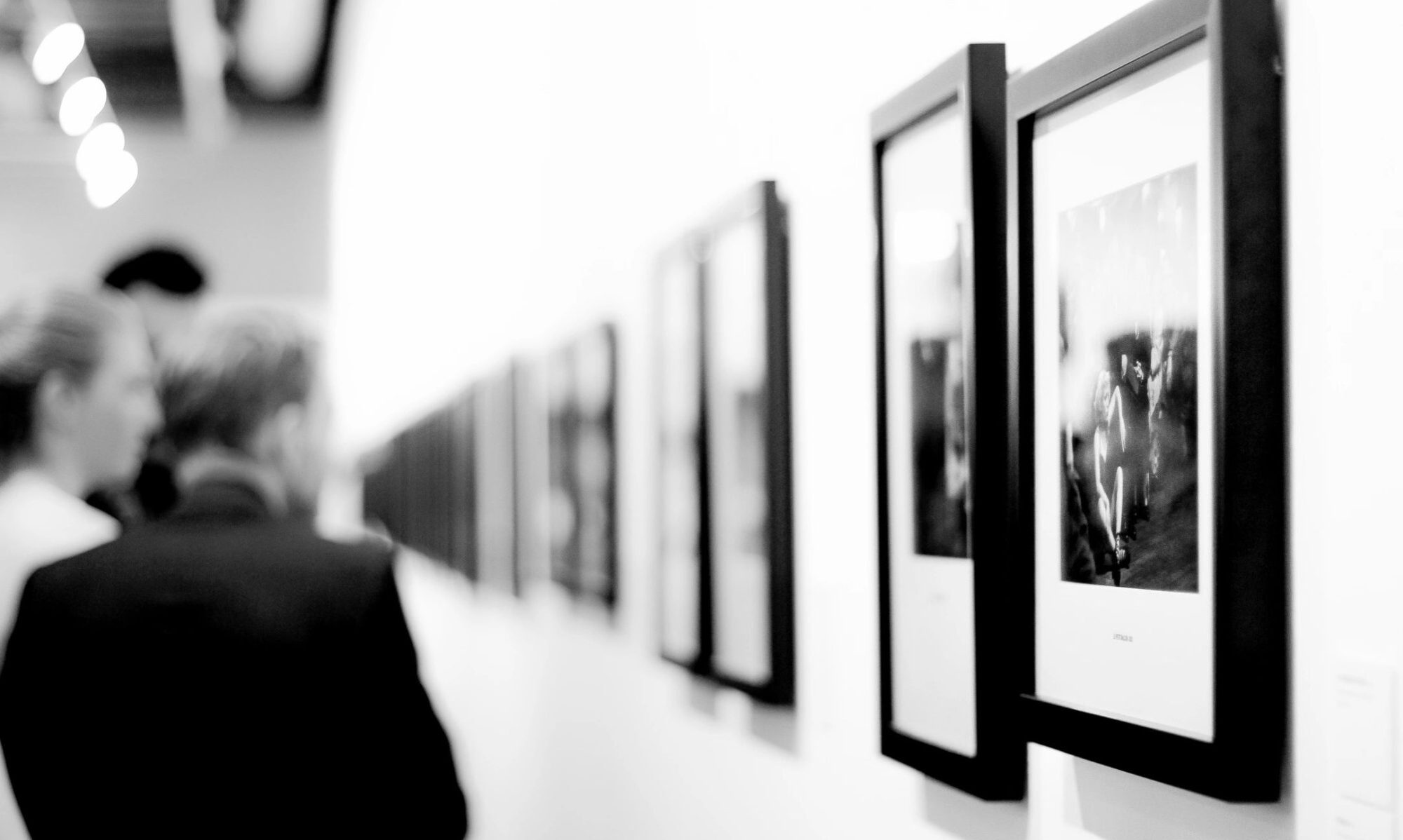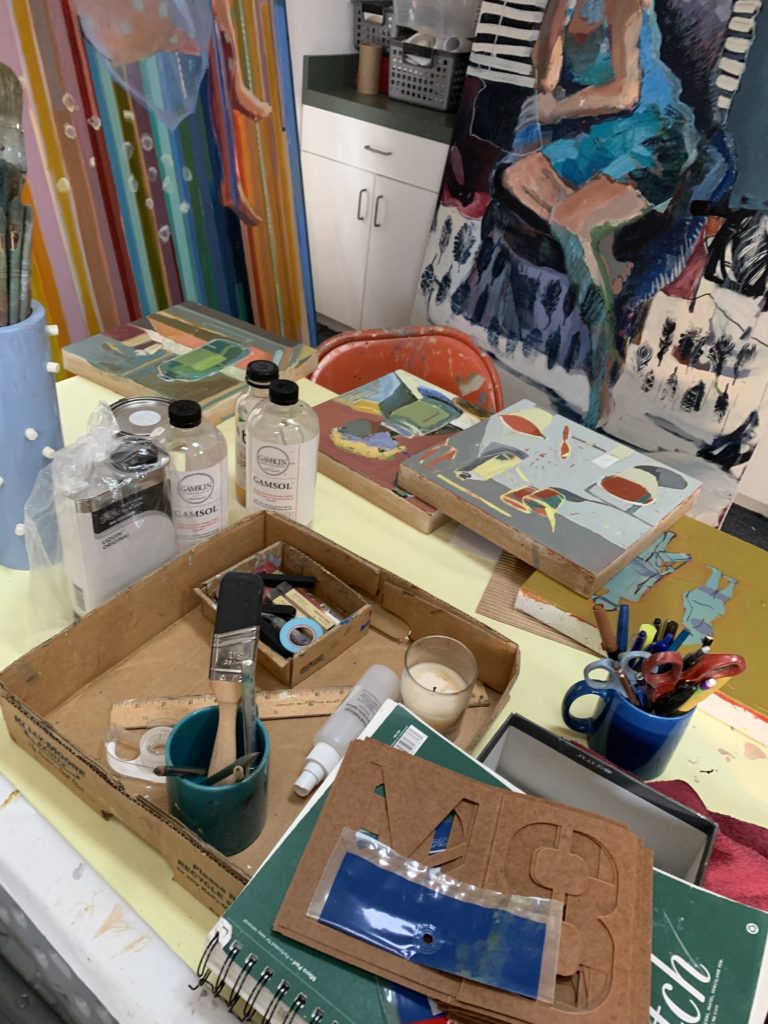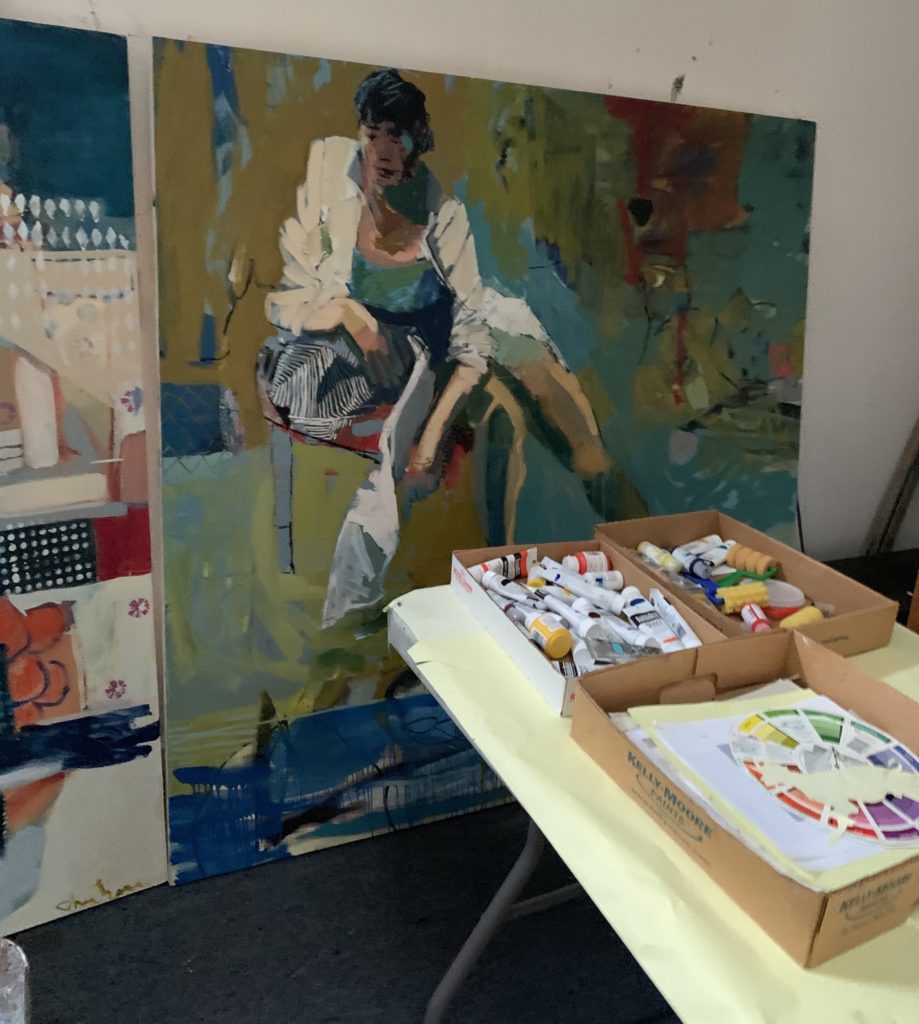31 Women – March 1st: Linda Christensen
Opening March 1st and on view through April 12th, 2020, Whitney Modern Gallery @whitneymodern is pleased to present 31 Women, an exhibition curated by Marianne McGrath @theartistcollector with Karen Gutfreund @karengutfreundart and Suzanne Whitney-Smedt @whitneymodern. 31 Women celebrates the work of 31 female artists, one woman for each day in the month of March, in honor of Women’s History Month. Women’s History Month annually commemorates women’s contributions to history, culture and society throughout the United States.
Highlighted individually throughout the exhibition are each artist’s process and inspiration, as well as her sense of connection to women in history and art history. Along with the show at Whitney Modern, artists will be featured on social media, blogs, websites and in the gallery – one woman a day for the month of March. This aspect of the show is intended to be a virtual exhibition that will be available to those out of the area, and it provides an opportunity to focus on a particular woman artist, emphasizing her unique practice and contributions to the art community.
ONE WOMAN A DAY begins today, March 1st with LINDA CHRISTENSEN
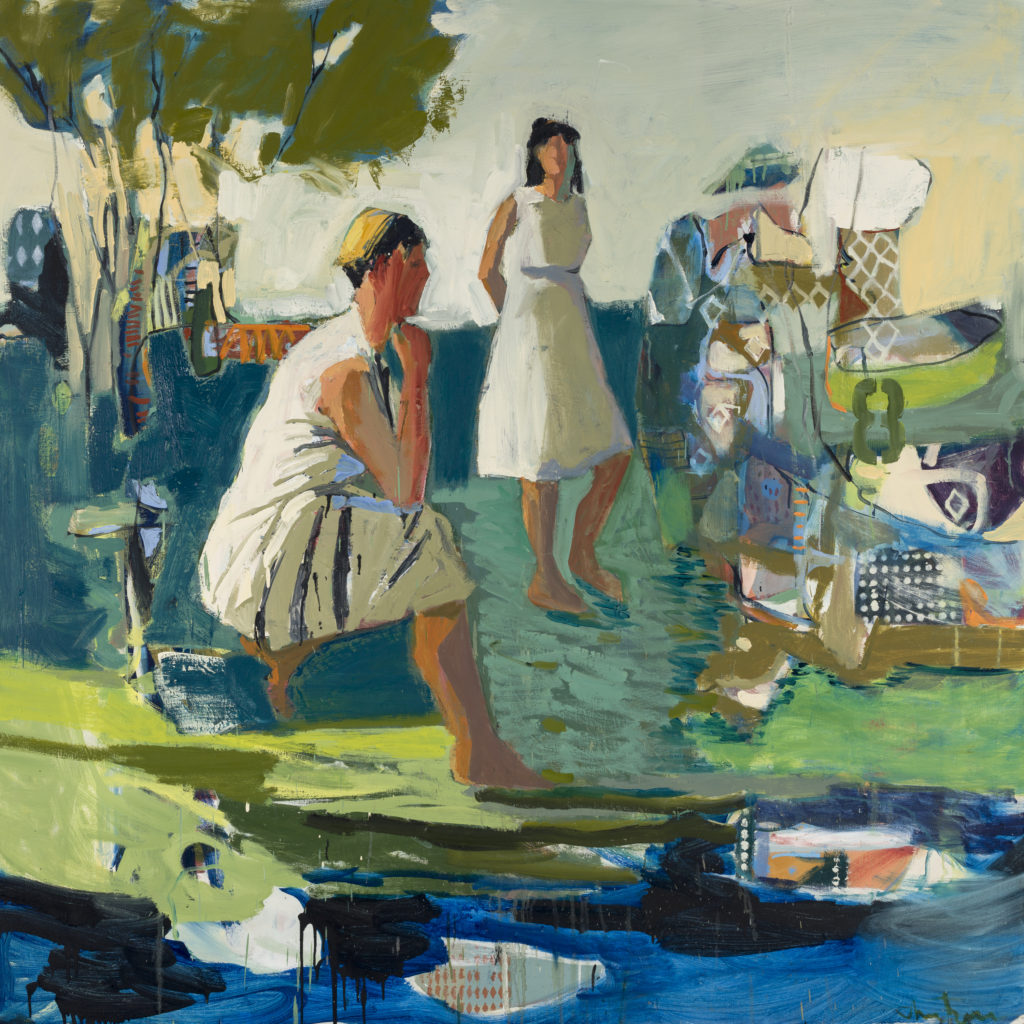
Picnic, 2019
Oil on canvas
As a California Bay Area native, Linda Christensen has always drawn inspiration and serenity from her natural surroundings, especially the coast. In her evocative paintings of ocean landscapes and domestic interiors, Christensen pays homage to the universality of human emotion. More than merely observing the figure, the viewer is invited to sympathize with the subject. Christensen states: “It is not enough to simply observe; we understand ourselves and others through feeling, through checking in emotionally. As a child I was always in tune with the subtle shifts in mood of those around me and this sensitive observation of strangers has continued to inspire my work as an artist.”
Linda Christensen is represented by Gail Severn Gallery, Sue Greenwood Fine Art, Winfield Gallery and Stremmel Gallery. Her work is prized in numerous public and private collections across the United States.
Excerpts from an interview with Linda Christensen
MKM: Tell me about your childhood? Were you always creative? Where did you study?
LC: I grew up with lots of coloring and drawing. The line drawings from coloring books were my first exposure to the beauty of line. I also scribbled and filled in with color as my way of experimenting with abstract shapes. I was very observant of people too and learned about what was going on in the world when I couldn’t make sense of the generalized information my parents gave me.
I studied art at San Jose Sate but tabled ideas of becoming an artist when I married a law student and began working full time in clerical work in San Francisco. I finished my art degree at UC Santa Cruz in the late 1980s.
MKM: When you’re creating what’s your daily routine? rituals, patterns?
LC: My daily routine is to create an environment that is calming and also entertaining. Studio work is isolating and can become tedious at times. I learned early on that black and white movies with simple plots provided a contrast to the pigments of my palette. The velvety grey-scale, deep shadows and single camera angles of the old movies are some of the elements that have informed my work. The day must be set up as to feel limitless with time as well as supplies, and someone else to make dinner. Everything is in abundance including a cabinet full of paint and a 6ft long glass palette.
MKM: How has your practice changed over time?
LC: In the past I thought nothing of having several paintings in progress at one time but now I have more reverence for what I’m doing in that I care about following the story to the end, independently. Each painting is a novel and I want to remember what happened in last week or month and stay curious and loyal to the process to the end. I’m still trying to figure out what the work is about and with painting one painting at a time I can better hear myself.
MKM: What would you love to pursue but haven’t yet?
I am still fascinated with the printed line. I would like to figure out a way of incorporating the delicate look of a printed line with an oil painting. I would also like to try a larger format. I work up to a 6×5 but I would like to work larger than that.
MKM: What is your most important tool? Is there something you can’t live without in your studio?
LC: I can’t live without a palette knife. It frees up the work when used, making my marks less controlled and it keeps the color from mixing when working wet in wet. I use the palette knife for mixing color on my 6ft. palette and use it to apply paint onto the canvas as well. It’s rough and sloppy but I can grasp the illusion of a hand or a face, which keeps me from getting too detailed. The image is not about getting everything correct but about getting the emotional content expressed. I also can’t live without my small oil pastels in black and white. Sometimes I use a blue. For a quick line addition, I love the pastel. It’s a chance to bring in the direct application of the artist’s hand at work. It feels especially intimate.
MKM: What do you like best about working in oils?
LC: I like to build up the surface of the work and scrape back and remove paint too. Oil paint represents butter to me… and when I’m resistant to going into the studio I imagine just putting butter on toast.
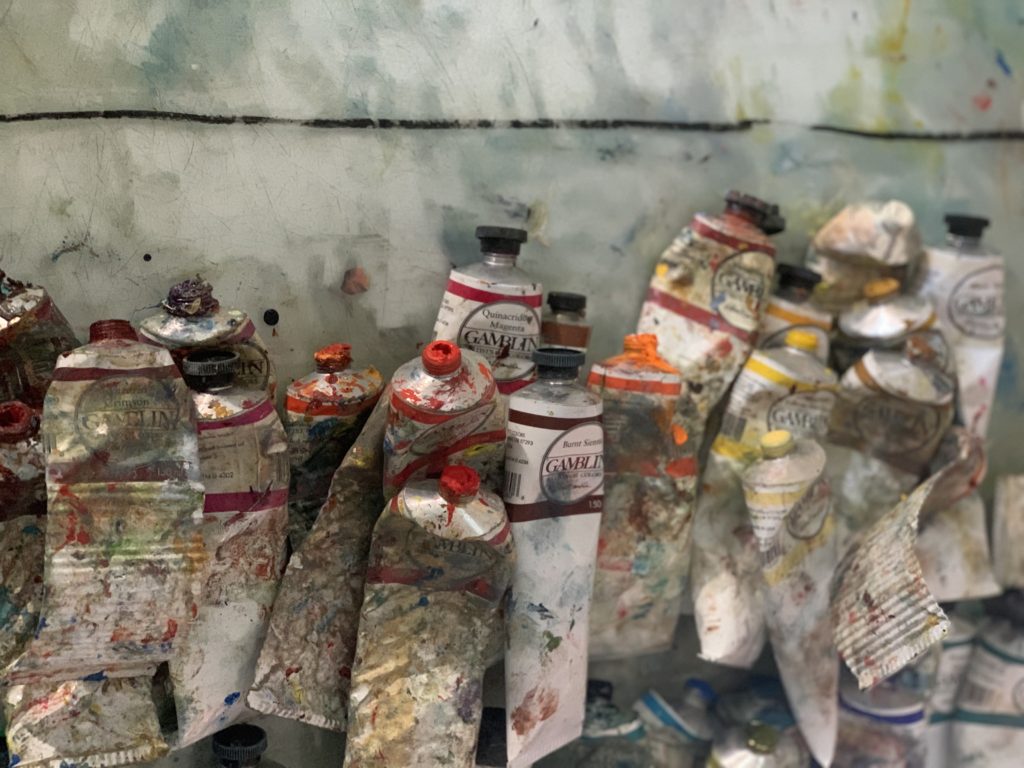
MKM: What inspires you? Other artists, other women from history, your process, a theme?
LC: Watching people inspires me. I can see glimpses of the human condition if I wait for it. I instinctively observe people, but I also use art books for reference and inspiration, I follow people on social media, I observe myself, and I have recently started hiring a model to come to the studio. I attend art conferences to hear and see other artists and their work; I love talking with other artists
Gabriele Munter was a woman I wrote a paper on during college. I was impressed by her ability to use black and the use of line. Munter was married to artist husband, Wasily Kandinsky and found it difficult to be recognized in her own right as a painter. I had a similar situation [in the past] being married to a criminal attorney. Graduating with an art degree was considered a frivolous undertaking and I was encouraged to instead go for a degree in education.
Squeak Carnwath is another artist that I admire. Her work is deeply personal and is based on her childhood. She also lets her political views be known and incorporates them into her work. I am inspired by Joan Mitchell for her abstract work and Dorothea Lang for her ability to capture the emotion of the time through photography.
